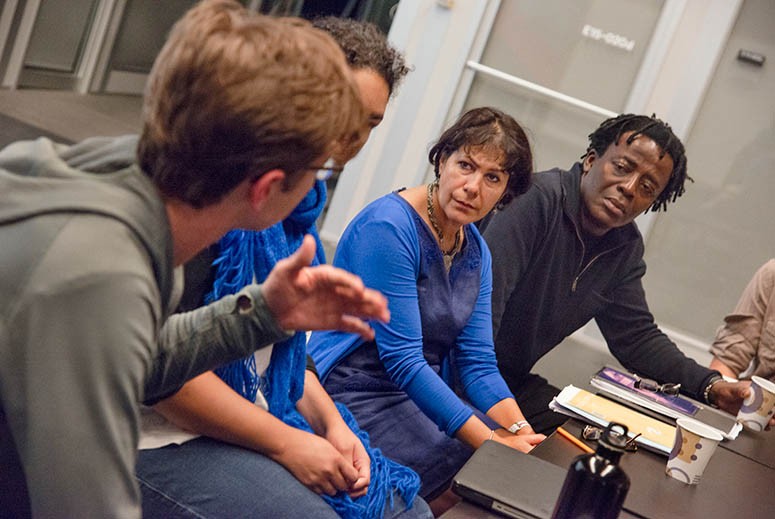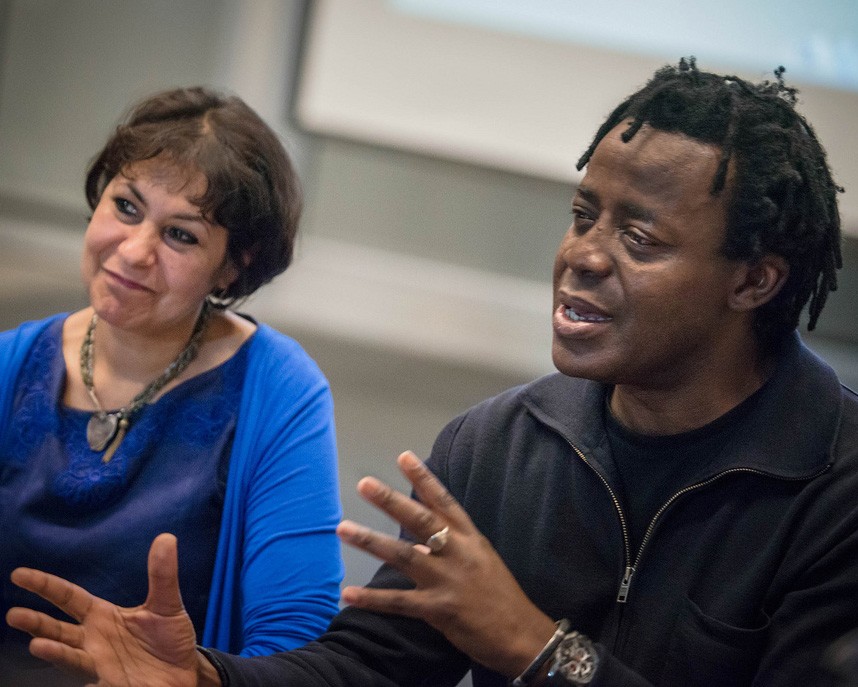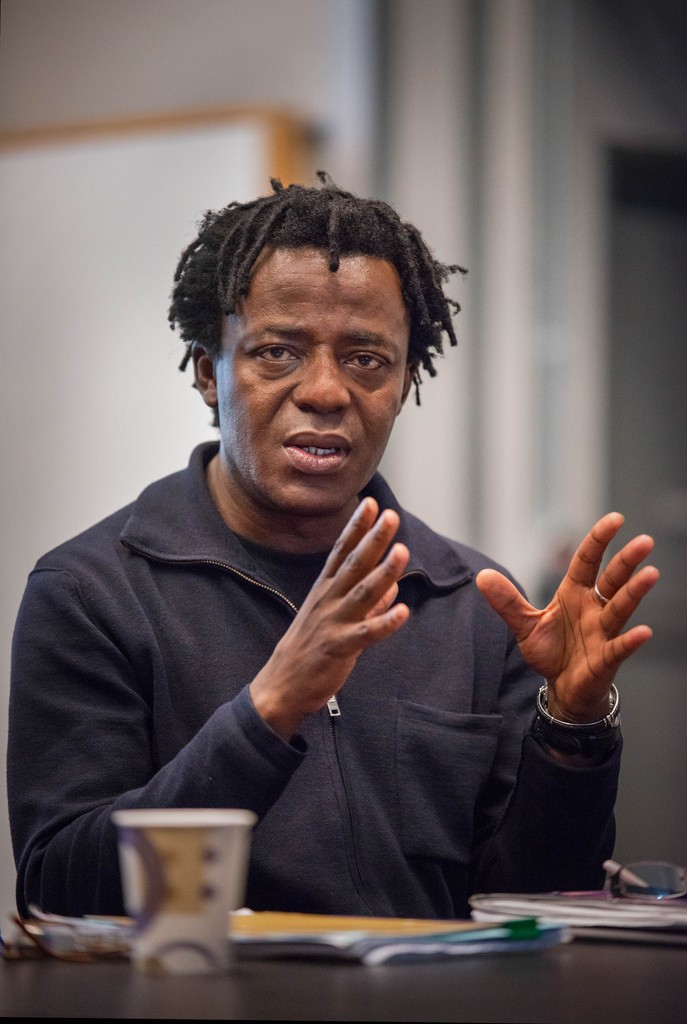
The essay film, once said the filmmaker and theorist Jean-Pierre Gorin, “is a form … that can navigate from documentary to fiction and back,” representing “the meandering of an intelligence” as it toggles back and forth between lyric phantasmagoria and the starkly real. Traversing all facets of reality — political, social, cultural, and emotional — this itinerant form was at the heart of the recent programming series, “Cinematic Migrations” produced by MIT’s program in Art, Culture and Technology (ACT) and the Center for Art, Science & Technology (CAST).
“Cinematic Migrations” was initiated by Renée Green, the director of the ACT program, whose pioneering works — spanning film to installation to publications — engage questions of identity, memory, history, and place. The goal of “Cinematic Migrations,” complementing that of the ACT program, was to illuminate the “variety of practices that bring to the foreground the figure of the artist-thinker,” says Green.
Anchoring these discussions were visiting artists John Akomfrah and Lina Gopaul, two founding members of the seminal Black Audio Film Collective, a group formed in Britain in the early 1980s that redefined black cinema. Combining a theoretical and political acuity with an avant-garde aesthetic, the Black Audio Film Collective continues to be an inspiration for today’s generation of artists, scholars, and filmmakers.
The term “cinematic migrations” is expansive. It refers both to technological migrations, as moving images are displayed across a variety of screens and contexts — from large auditoriums to handheld devices — and to the sociopolitical and cultural migrations of people, cultures, and ideas across geographic borders. “Cinematic Migrations” explored the possibilities for new cinematic languages to express what it means to live in a global, postcolonial world, where people are entangled in history and have lived outside the bounds of easily categorized identities.
In reference to his 2012 film, “The Nine Muses,” Akomfrah says: “We were trying to understand how people ‘become’ migrants. How you move from a place of certainty — your country, your town, your continent — into this other thing, which is not really either here or there. I don’t think it ever ends.”
After a series of classes, workshops, and public lectures presented throughout a period of two academic years, “Cinematic Migrations” culminated in a symposium from March 6-7, featuring leading theorists and practitioners in the field today, including Manthia Diawara, Laura Marks, Gloria Sutton, Arthur Jafa, and Fred Moten.
As part of the symposium, the Harvard Film Archive screened several of Akomfrah and Gopaul’s iconic works: “The Last Angel of History,” “Memory Room 451,” “Handsworth Songs,” and “The Stuart Hall Project.” Premiering at MIT was Akomfrah and Gopaul’s most recent two-screen installation, “Transfigured Night,” a lyrical film based on a poem by the early 20th-century German poet Richard Dehmel, whose narrative Akomfrah suggests can be read as an allegory for the postcolonial state. ACT also had the honor of premiering the first public screening of “The Stuart Hall Project” in North America, and the short film “Three Degrees of Distance to the Disaster,” commissioned by the Venice Film Festival.
In their politically charged and experimental films, Akomfrah and Gopaul recontextualize archival images, a society’s dreams of itself, and in doing so imbue them with new meanings. In juxtaposing disparate sounds and images in gorgeous montages, the work reclaims a sensory territory to suggest new ways of being in the world. The films reveal what scholar Manthia Diawara called in his symposium presentation, “a poetics of becoming.”
Akomfrah and Gopaul also worked with MIT students to create a collaborative film, “The Memory Album,” using found footage from the students’ own lives, which premiered during the symposium. Just as in Akomfrah and Gopaul’s striking film essays, “The Memory Album” reinterprets the documentary format, redraws the lines between official history and private memories, and reshuffles cinematic imagery to form new connections and associations that shed light on the contemporary conditions of wandering — the state of being between here and there, between past and present.
In the process, Green says, students learned about the practical and formal aspects of how a work is made. The result was an exciting amalgamation of the different perspectives and aesthetics represented in the workshop. “What is remarkable about [the film] is that all the voices that participated in the Cinematic Migrations Workshop and the residency were included. We were able to create a space in which all of the participants’ work, thoughts and ideas could find a place to be articulated,” says Green. “Greatest lesson learned? That the Institute is a place in which great interdisciplinary work can take place and that there’s space for complex art that embraces thinking and divergent histories, as well as public and political engagement.”



